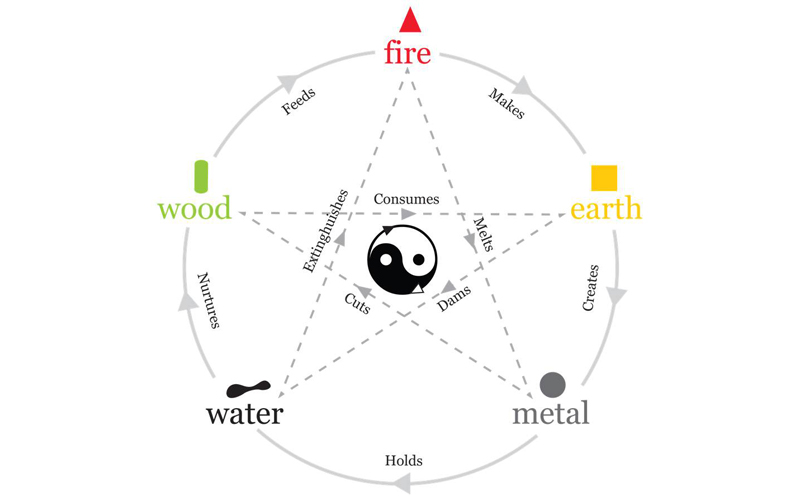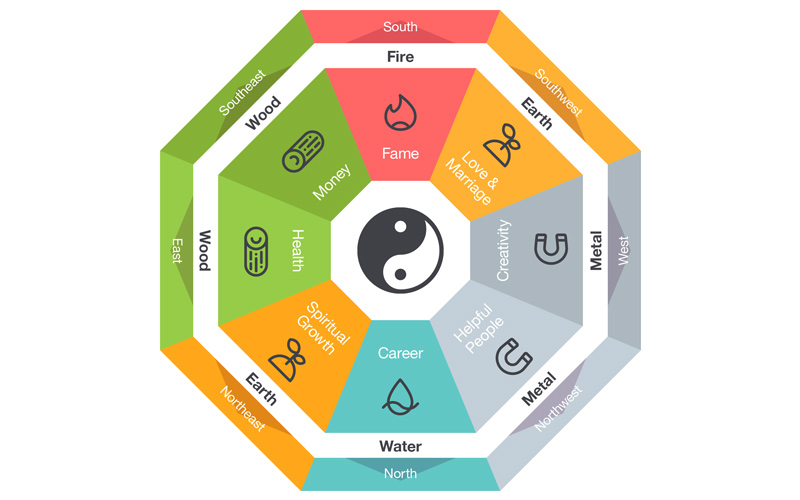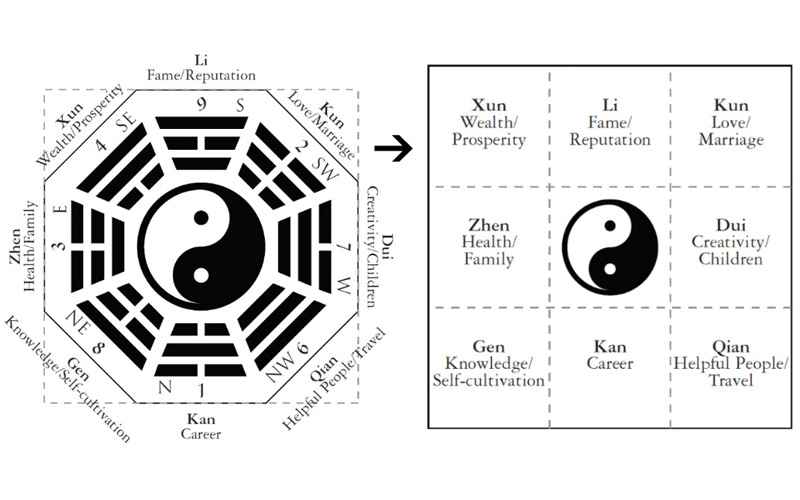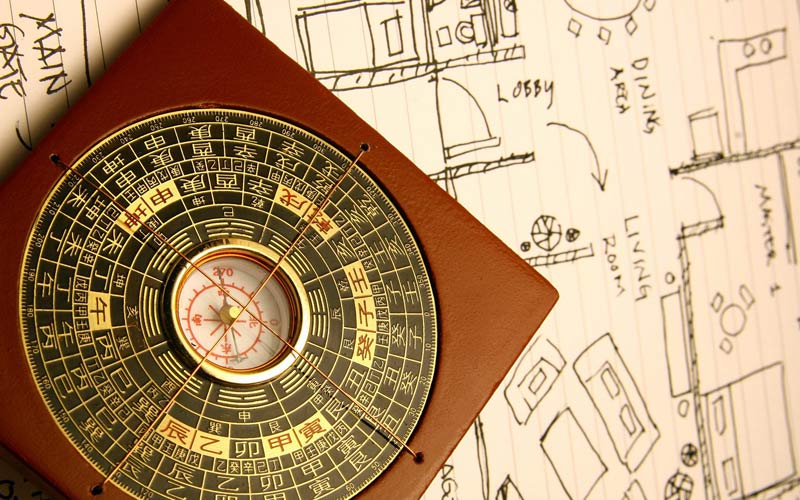What Is Feng Shui? Fungswae Full Guide

For those who are in the habit of designing their own decor and changing it from time to time, feng shui is a very familiar concept. However, while a lot of people use its principles, not everyone knows about feng shui meaning and definition exactly. Join us to see what this concept means and what its principle are. Let us start with:
Feng Shui Meaning and Definition
Feng shui, also known as Chinese geomancy, is an ancient Chinese philosophy and traditional practice (or art) that claims to use energy to harmonize individuals with their environment and help them find balance in their way of living with nature through spatial design. In other words, feng shui says that the way your house is built or objects are arranged affects your success, health, and happiness.
To understand feng shui meaning better (pronounced fungswae and sometimes functuay), let us break the word down. Literally, the term means “wind-water”.
This concept is based on Taoist belief in the flow of the universal Qi energy (pronounced chee) that is believed to connect all living things as well as flow through places and structures. And since this cosmic current’s patterns are similar to wind and water, you can affect the flow to improve wealth, happiness, long life, and family by understanding these patterns.
Note: The Qi itself is made up of opposing but complementary yin and yang forces that cannot be separated. Yin is passive and soft energy, while yang is more aggressive and bold. Although there is a contrast between yin and yang, it creates a connection between them and the result is a balance. Taoists believed that by balancing these elements, you can enhance the positive Qi’s flow in your lives while keeping the negative Qi away.
However, feng shui can go wrong too. If you fail in implementing specific design principles, not only the auspiciousness will not promote, the wrong flow of Qi will cause unpleasant results. Interestingly, in addition to improving your overall quality of life, fungswae includes astronomical, astrological, architectural, cosmological, geographical, and topographical dimensions too.

What Is Feng Shui?
Now that you know what the feng shui’s definition is, let us take a closer look at it and its history. It was mentioned that fungswae was rooted in Qi, Qi is made of yin and yang, and by balancing them you can basically have a better life.
As a result, functuay is a method of balancing these elements to improve the energy flow hi by arranging interior designs, buildings, and even cities in a certain way. This correct flow will later bring health, luck, and prosperity.
The feng shui meaning may be crystal clear, but it is not the same for its origin. However, the evidence tells us that the Chinese have been designing their homes and towns based on these principles for over four thousand years.
The early examples of this practice can be found in ancient Chinese grave sites’ placement (where positive Qi was crucial). But today, you can find people all over the world who use fungswae rules to decorate their homes.
Basic Rules of Feng Shui
Feng shui rules are mostly about what items to place near or away from openings and entries like doors and windows, as Qi can enter and leave through them. Let us explore these rules more.
The Five Elements
According to the relevant traditions and texts, fungswae states that everything is composed of five elements: wood, fire, earth, metal, and water with different degrees. Each of these elements is represented by its own color.
Each of these can interact and create constructive and/or destructive interactions. For example, water helps a tree to grow and wood to form, wood burns by fire, and water extinguishes fire. These are examples of interactions. Other elements form a natural cycle in the same way.
These five elements also correspond to certain emotions, colors, shapes, and areas on the energy map:
- Earth has grounded, self-care, and stable qualities, flat and square shapes, and brown, orange, and yellow colors. The earth element transitions between the seasons and is related to wellness, knowledge, and partnerships areas.
- Metal qualities include efficiency, precision, and beauty, circular and spherical shapes with white and metallic colors. Metal’s season in autumn and its areas are helpful people and children.
- Water qualities are downward, flowing, and shifting with wavy, curvy shapes. Its color is black with winter as its season and career as its area.
- Wood has expansive, vitality, and upward qualities with columnar and rectangular shapes. With colors of green and blues; the wood’s season is spring and its areas are family and wealth.
- Fire qualities are passion, illuminating, and brilliant with triangle and pointy shapes. Its color is (of course) red, its season is summer, and its area is fame.
You should use interior design to balance them for the best energy flow. The easiest way to change functuay in space is by adding or moving one of these elements. All materials you see around can be classified as one of these types. According to feng shui specialists, mixing, combining, or subtracting these items can improve the positive Qi flow quickly.

Bagua Energy Map
The Feng Shui energy map, also known as Bagua, is an octagon containing Qing symbols that draw on Shanghai science and jurisprudence. Knowing this map will help you to understand the connection between different areas and objects of the house better and create a design for the right energy flow.
Bagua, which means “eight areas,” is an energy map placed over the floor plan of homes. It is a three-by-three grid with eight boxes. The center represents you, while the boxes represent different categories of your life including:
- Southeast, Number 4 is Wealth (Xun), representing abundance, prosperity with columnar and rectangular shapes, purple color, and yin wood as its element.
- South, Number 9 is Fame (Li), representing fame, reputation, passion, and visibility with triangle and pointy shapes, red color, and fire as its element.
- Southwest, Number 2 is Partnerships (Kun), representing marriage and self-care flat and square shapes, pink color, and yin earth element.
- East, Number 3 is Family (Zhen), representing family and new beginnings with columnar and rectangular shapes, green, blues, and teal shades, and yang wood as its element.
- Center, Number 5 is Health (Tai Qi), representing overall wellness with flat and square shapes, brown, orange, and yellow colors, and earth as its element.
- West, Number 7 is Children (Dui), representing completion and joy with circular and spherical shapes, white and metallic colors, and yin metal as its element.
- Northeast, Number 8 is Knowledge (Gen), representing self-cultivation, skillfulness with flat and square shapes, dark blue color, and yang earth as its element.
- North, Number 1 is Career (Kan), representing the path in life with wavy and curly shapes, black color, and water element.
- Northwest, Number 6 is Helpful People (Qian), representing Helpful people, benefactors, travel with circular and spherical shapes, gray and metallic colors, and yang metal as its element.
You can use the fungswae map to determine furniture and other object placement in the house for maximum efficiency. If any area in your life needs improvement, you can apply appropriate rules of feng shui in the corresponding home area.
The first place to use this energy map is at the entrance to the house to make the energy flow, then the rooms, and other remaining areas. For example, the space of wisdom is the place where books are placed, while the space of love is where, for example, a wedding photo frame is placed.

Feng Shui Compass
Functuay compass is similar to a normal compass, which was made with the features of any other compass to determine the position of objects and even buildings. This compass is called Lu-Pen, Lu means everything and Pen means bowl. The ancient Chinese believed that all the mysteries of the universe lay in this compass and with its help they could reach the unknown.
This compass is used to determine the correct position and direction of any object in the house. In order to apply the rules of feng shui in the environment, you do not need this compass. A normal one would suffice, but if you decide to dive deeper into the subject, having a compass will give you a sophisticated insight.
You can discard the compass entirely and consider the right commanding position. This is the furthest spot from the entry and not in a direct line within the room. Where ideally, there should be a clear line of sight to the door.
The commanding position should be where you spend most of your time when you are in the room. After finding this spot, you need to place your bed, desk, or stove there according to the rules of feng shui. This is because these parts represent essential parts of your life. The bed stands for you, the desk is for your career, and the stove is for wealth and nourishment.

Final Thoughts of Feng Shui
A question like what is feng shui does not have one definite answer. It holds thousands of years of Eastern civilization. There are many articles covering the rules of the feng shui on the internet. However, there are also schools that teach this art in a traditional way with its true method for those interested. Some of these schools incorporate Buddhist teachings that take on a religious style, while others incorporate modern methods that are more popular in Europe and the West.
Although there is no scientific evidence on fungswae, as you learn about feng shui meaning and its philosophy, you will learn about respecting symbols, and how to use them intelligently to their full potential.
Do you use this art in decorating your house? Share your experiences with us and other readers.
- In this post:
- Feng Shui Meaning and Definition
- What Is Feng Shui?
- Basic Rules of Feng Shui
- Final Thoughts of Feng Shui



